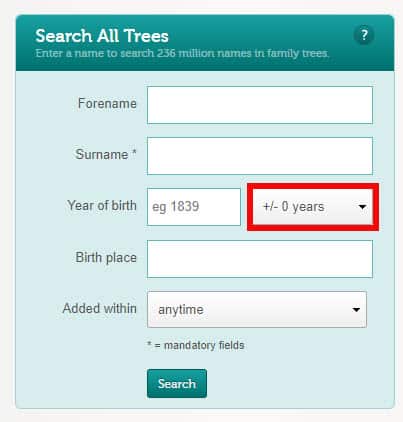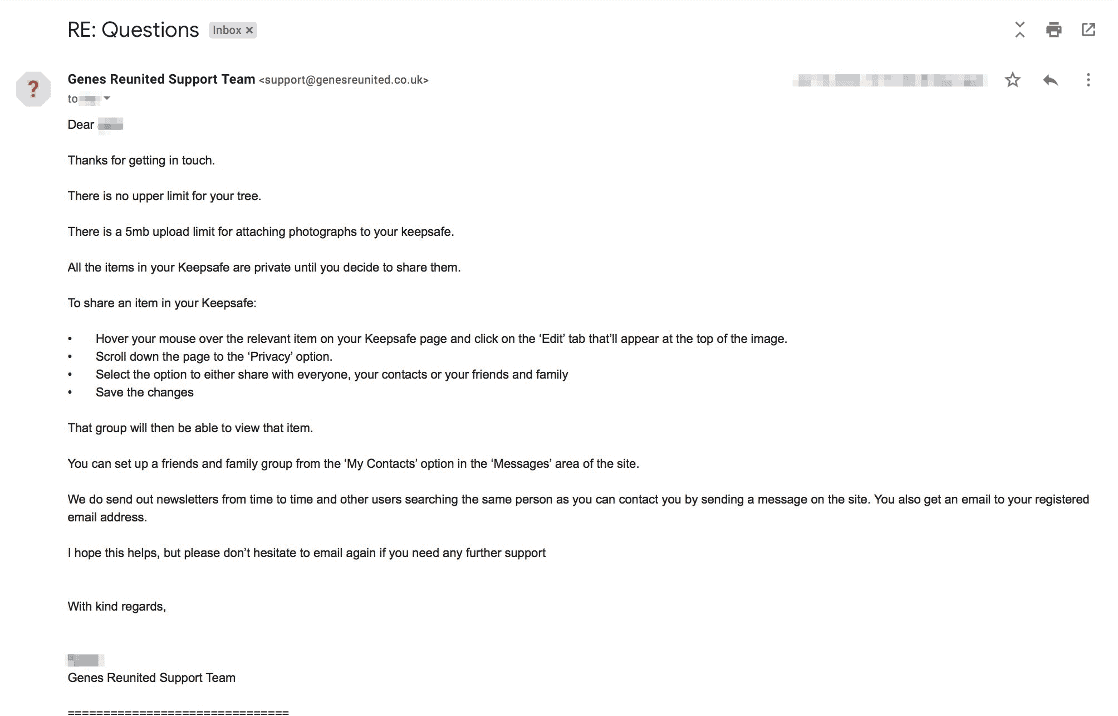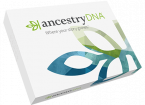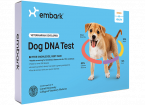Overview: Simple and Free (at first)
Genes Reunited is a straightforward platform for building family trees and connecting with others who share common ancestors. It’s particularly helpful if you’re tracing your lineage in England and Wales, thanks to its large collection of historical documents that provide deep insights into your family’s past.
The platform makes it easy to integrate these records into your family tree, giving you a richer understanding of your ancestry. It’s a simple, holistic approach to discovering your roots.
However, I have to be upfront with you—accessing records on Genes Reunited comes at a cost, which is something to consider if you plan to expand your family tree. The good news is there are several payment options that offer flexibility. But if you’re focused on British and Irish ancestry, I’d recommend checking out FindMyPast. Its premium plans are cheaper, and it offers more records.
I’ll walk you through my experience using Genes Reunited—both the good and the not-so-good—so you’ll have a better idea if it’s the right platform for your family tree.
Get Start FREE With Genes Reunited
What You Get for Free
Taking Genes Reunited for a test drive won’t cost you a single penny. You can effortlessly register for free on their website using your email address. Concerned about privacy? Rest assured, Genes Reunited vows to never disclose your email address to fellow members or third parties. As a free member, here are the perks you can enjoy:
- Construct an online family tree and add as many relatives as you desire.
- Utilize the People Finder to search for family members by name (one free record view).
- Upload photos and documents to your Keepsafe, whether sourced from the website or scanned from your personal collection. This feature enables you to edit, share, and attach files to relatives on your family tree.
- Respond to messages sent by other members.
- Import GEDCOM files.
Joining is a breeze, taking only a minute to complete the necessary fields before gaining access to your profile. Simply provide a few details about yourself, such as your name, gender, and year of birth, and create a password.
Embarking on genealogy can be an arduous task, especially when you’re just starting out. Therefore, I truly appreciated the seamless setup process, allowing me to delve right in without delay.
Get Started Fast & Easy With Genes Reunited!
5 Standout Features of Genes Reunited
1. Pay Per View Credits Let You Access Records If You Don’t Want to Subscribe
If you’re hesitant about committing to a subscription with Genes Reunited but still wish to access its extensive record database, purchasing credits is an option. These credits can be used to view records or communicate with other members. This method is ideal if you’re clear about the specific areas of your family history you want to explore but prefer not to engage in a long-term commitment.
However, there is a drawback: credits have an expiration date, and your access to records purchased with credits lasts only 30 days. The cost of credits can also accumulate quickly. To help with this, the website provides a list showing the cost of records in credits before you make a purchase.
2. Access Over 550 Million English and Welsh Historical Records (Platinum Subscription)
With a Genes Reunited Platinum subscription, you gain access to a wealth of records that can provide answers about your English and Welsh ancestors. You’ll be able to peruse birth, marriage, and deaths recorded from 1837 to 2004, Victorian census records (including Scotland), and the 1911 census where you might even stumble across documents containing your ancestor’s handwriting.
3. Find Members Who Share Names on Your Tree With Hot Matches
Genes Reunited has a system that runs in the background and compares the names on your tree with other members’ trees. When there’s a match, you receive a message in your profile and have an opportunity to contact the member. A Super Hot Match occurs when the name, year of birth, and parents of a relation match up across two trees.
There are two downsides to this feature, however. The Genes Reunited development team triggers the system to look for Hot Matches intermittently and it only checks up to 50 names (at random) on your tree at a time.
4. Free eBook Serves as the Perfect Welcome Package
New to genealogy research or curious about how Genes Reunited works? There’s a helpful eBook available in PDF format that walks you through the website, its features, and tips for getting started. What really stands out are the general genealogy tips it offers—like how to interview family members and stay organized as you collect information.
5. Genes Extras (With Subscription)
There’s no shame in offering deals to loyal customers, even if those offerings have nothing to do with genealogy. Reserved for subscribers only, Genes Extras gives you exclusive offers and discounts to help you save money on memorable experiences. At the time I checked, members could get hotel offers and discounts on afternoon tea for two (Yes, please!).
Build Your Family Tree With Genes Reunited!
Growing Your Tree Is a Breeze – But It Takes Longer Than It Should
A free membership is all you need to build the rough framework of your family tree. But if you want to access records and pin them to your tree – you know, make it look beautiful and something to be proud of – you’ll need to pay a monthly subscription or buy credits.
You can add names to your family tree one at a time or, if you need help, you can use the Quick Family Finder to trace your family lineage. In theory, this feature helps you locate your birth record first, then works backward in history to find your ancestors. Unfortunately, when my colleague tested this, it didn’t work. Yes, she’s British and has a birth certificate and so on, but it just kept throwing up an error.
You can also search for names on other members’ family trees (Genes Reunited has a whopping 236 million names). If you don’t know the person’s exact date of birth, you can enter the approximate year, then use the plus/minus drop-down to broaden your search by plus or minus up to 50 years from the approximate date you entered to broaden your search.

Unfortunately, I never got used to navigating my family tree. One of the hang-ups I have is that sometimes – not always – when I select a name, a small window appears in the center of my tree telling me to “Please Wait” while four progress bars load. Fortunately,it’s quick and the window only flashes for a brief second before it vanishes from the screen, but it took me out of my train of thought whenever I shuffled through names.
I wish the display issue was the only challenge I faced while navigating my family tree, but unfortunately, there’s another aspect that’s bothersome. The family tree doesn’t always show all the names you’ve added, requiring you to select specific names to access others.
For instance, after adding my aunts and uncles, selecting my name only displays my parents, spouses, siblings, and children. It doesn’t show my aunts and uncles (or cousins) unless I click on one of my parents. When I select a parent, the family tree shifts to reveal more branches while hiding others, which I never quite adjusted to.
It might be a matter of personal preference, but I prefer a tree that consistently displays all my relatives and allows me to scroll freely to view branches, similar to the functionality offered by MyHeritage. While this issue didn’t deter me from building my tree, it did cost me additional time.
Pricing: Platinum Plan Offers No Guarantees, but It’s the Best Option
You already know what a free membership gets you, but what sorts of benefits does a subscription to Genes Reunited unlock?
There are two monthly subscription plans to choose from: Standard and Platinum. A Standard membership gives you more access to the Genes Reunited community. You can view other members’ trees, contact others who share your ancestors, and participate in the community by posting on any of the website’s 11 message boards. Without a membership, you can only view posts on the message board (so you won’t be able to post anything).
Here’s the fine print: The Standard subscription won’t give you access to records. You do, however, receive 50 credits when you sign up for a Standard subscription. It’s up to you whether you want to use those credits to access records or to send messages to other members.
A Platinum subscription gives you everything a Standard membership offers plus access to records (but without the 50 credits). If you commit to paying for one month of the Platinum membership, it’s more than three times the amount of Standard for one month.
With a Standard membership, there are three payment plans to choose from (with greater savings the more months you commit to):
- 1 month
- 6 months
- 12 months
Platinum, on the other hand, only offers two payment plans:
- 1 month
- 12 months
Here’s something important to keep in mind: if you choose 6 months (for Standard) or 12 months (Standard or Platinum), you’ll reap huge savings.
Here’s an example to put things into perspective: If you commit to a 12 month Platinum plan, the month-to-month amount you pay is almost as cheap as what you would pay if you commit to just 1 month of Standard. The savings are extraordinary considering how many more features you get with Platinum.
So how does Genes Reunited’s pricing compare to other popular family tree services? Findmypast has three different monthly plans that each offer greater levels of access to records the higher up you go. Unlike Genes Reunited’s Standard membership, the starting Findmypast plan actually gives you access to records such as British and Irish censuses.
Plus, if you sign up for Findmypast’s free membership plan, you can access free-to-view records such as 1881 census records (for England, Wales, and Scotland), Irish parish records, and British military records. Genes Reunited, on the other hand, does not give you free access to any records.
Is Genes Reunited worth the cost? If you have the budget for the Platinum subscription, you have a much higher likelihood of finding answers to your UK family history. The Standard membership seems harder to justify since it won’t give you access to records.
Customer Support: Only One Way to Contact Them, But It Works
If you don’t know how to use Genes Reunited and need guidance, there’s a help center on its website. This section of the site is a great place for beginners to start since it contains frequently asked questions and a link to download your free eBook.
Should you encounter any technical problems and have questions that extend beyond the help center, you can always escalate it up to the support team. Unfortunately there’s only one way to contact the support team: Email. You can send the support team an email directly or fill out a contact form on its website.
After reading the eBook and FAQs page, I had a few questions I wanted to clarify about the size limits of my family tree and Keepsafe. Plus, I stumbled on a blog post (on its website) claiming that Genes Reunited will contact you if other members search the same names as you, so I thought I would reach out for more information.

I received a prompt reply that addressed my questions and made me feel squared away for the most part. The only part I still don’t exactly understand is the last point about how Genes Reunited contacts you if others search the same names. It seems like a really useful feature though, and I’m still interested in learning more about it.
It’s too bad Genes Reunited doesn’t offer more contact methods at this time, especially since it can take two business days (or more) for its team to respond to emails.
A Great Platform to Build Your First Family Tree on (That Can Leave You Wanting More)
Where are you at in your genealogy research? If you’ve never made a family tree before, Genes Reunited ticks off all the boxes you could want in a service when first embarking on your genealogy journey (assuming you have British ancestors): It’s free, offers a very quick setup process, is easy to use, and has a fully loaded help center with resources to orient you to this new (and often intimidating) world.
If you already made a tree in the past using another program and still have missing gaps in your family history, I’d think long and hard about whether the Platinum membership is in your budget. It’s the only way you can access records on Genes Reunited (and it isn’t cheap).
While you do benefit from sharing your tree with other members who can potentially put you in touch with a living relative, there aren’t many more reasons (outside of the records) to subscribe.
For established tree builders with British ancestry, before you sign up for a Platinum membership with Genes Reunited, make sure you check out Findmypast. It’s less expensive than Genes Reunited and offers more options for accessing its records across three different subscription options.













